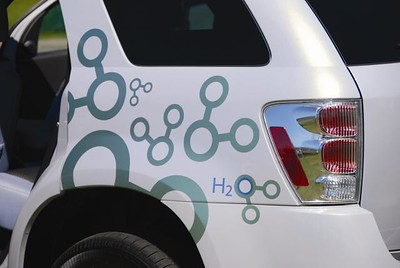Earlier today, Governor Gretchen Whitmer and US Commerce Department Secretary Gina Raimondo announced that Michigan has landed a new hydrogen plant. Norway’s Nel Hydrogen will invest $400M in in the construction of the facility in Southeast Michigan. When complete, it will be the largest hydrogen plant in the United States. According to Nel Hydrogen CEO Håkon Volldal, the company chose Michigan due to its proximity to General Motors.
The company estimates that it will create 500 new jobs. Additionally, the plant – which can support both automotive and other clean energy applications- will help Michigan achieve carbon neutrality by 2050.
The exact site for the facility has not yet been determined, but it is likely to be located near Detroit Metropolitan Airport. Imagine if Washtenaw County were a contender for this facility. What would that take? Facilities like these require more than tax incentives. They require employees who are ready to get to work.
WCC, which could presumably play an important role in preparing the new clean energy workforce, would likely need to establish some programs that don’t currently exist. That requires investment on our part.
To be clear, Washtenaw County taxpayers are, in fact, making enormous investments in Washtenaw Community College. In 2023, we’ll be sending an additional $7M in tax revenues to WCC. It remains to be seen what kind of return on our investment we can expect. (Hopefully, it’s a maintenance budget that’s more than $300,000, and inflation-corrected investments in the instructional budget that can fund new programs in clean energy.
Hydrogen plant reminds us that we need to address alternative energy needs
It’s not a mistake that General Motors announced the termination of the Chevy Bolt EV earlier this week. The automotive industry has long eyed hydrogen as a potential fuel alternative to petroleum. Hydrogen fuel cell technology can permit cars to travel longer distances between refueling. Currently, the Toyota Mirai, which operates on hydrogen, can go about 400 miles per tank.
While Ford has chosen to go all in on EVs, it’s clear from the number of electric vehicle programs that GM has cut that EVs may not be a key part of the company’s alternative fuel strategy. But clearly, hydrogen is. If it weren’t, Nel would not be making a massive investment here.
It’s unfortunate that as a community, we are largely unprepared to meet our own alternative energy needs. And it’s not that we’re not providing the funds to underwrite the necessary training. We provide WCC with $70 million in tax funding. We should be getting something in return.
Photo Credit: Los Alamos National Laboratory, via Flickr















